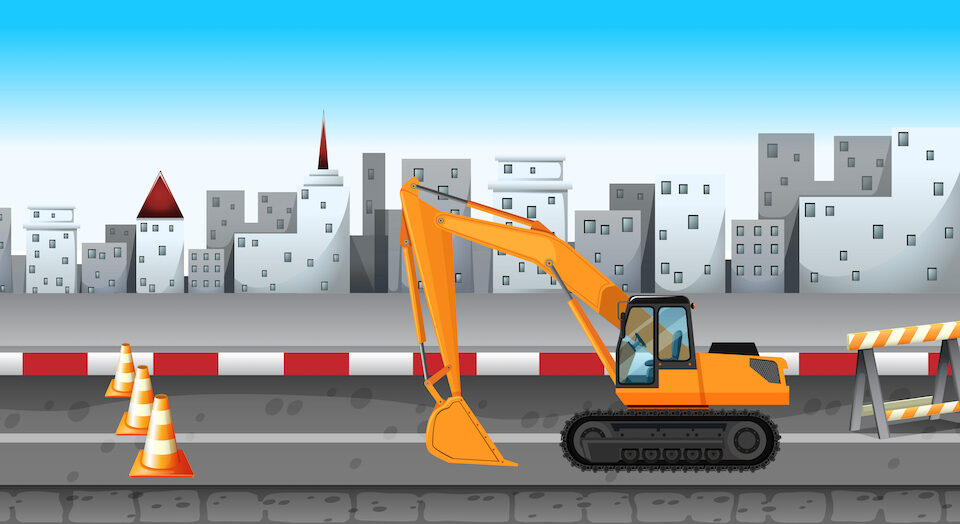- Mail:
- info@digital4pro.com
The copper network: from origins to the Ultra Wide Band

Automotive: Mauro Rigoni, CEO Village Rent
27 Luglio 2020
La rete in rame: dalle origini alla Banda Ultra Larga
28 Luglio 2020The copper network, born 150 years ago with the commercial telephone service¹, today sees a technological evolution in the integration with fiber optic networks for the provision of Ultra Wide Band services that can reach, through copper, the speed of the the order of the Gbit / s although on rather limited routes.
The first distribution networks were built using overhead lines made up of pairs of bare wires supported by poles but, already in the late 1800s, to eliminate the tangle of wires that tended to form in urban areas, they began to use of cables, still with aerial laying or, more often, with underground laying.
Only in the more peripheral part of the network did the replacement of overhead lines with cables (also often with aerial laying) take longer. In some contexts (such as in railway voice systems), on the longer bindings, pupination² was adopted, i.e. the insertion of inductance coils at regular intervals, to obtain a lower attenuation at vocal frequencies at the expense of a total block of the higher frequencies, which forces you to remove the pupination if you want to use the twisted pair for ISDN³ access later or as a carrier for a multichannel system.
The telephone network cables consist of a set of conductors, suitably insulated, corded together and protected by an external coating suitable for the laying conditions foreseen for the cable. The need to wire⁴ the two conductors used by each circuit (with a pitch of a few tens of centimeters) derives above all from the need to minimize the electromagnetic coupling between the different circuits in the same cable, which would give rise to the phenomenon of crosstalk, i.e. the unwanted transfer of signals from one circuit to another.
The stranding eliminates crosstalk both by ensuring that the electromagnetic field generated by one wire compensates for that generated by the other, and by ensuring that the spurious signals picked up by one wire are the same as those picked up by the other, so as not to give rise to any voltage difference between the two wires.
The most used cable for a long time, after the first realizations with impregnated paper, was the one with paper and dry air insulation. The insulation was obtained with a paper tape wrapped on the conductor or a layer of paper pulp applied on it.
Given the high amount of air contained in the type of paper used, the dielectric was mainly made up of air. Thanks to this, a low mutual capacity between the wires and low dielectric losses were obtained. This type of cable requires a perfect seal against humidity and therefore has a metal sheath, usually made of lead alloys (to minimize the inconveniences deriving from the crystallization of the material under the effect of vibrations). The sheath was sometimes covered with an iron tape armor and a bituminous bandage.
From the late 1950s, the paper cable began to be joined by cables with polyethylene insulation, full or expanded. At first these cables were made with plastic sheaths, but soon gave results below expectations, due to the imperfections in the insulation polyethylene and the limited impermeability typical of a plastic sheath. The solutions almost universally adopted for this problem were the pressurization of the cable or its filling with suitable jellies.
Since the early 70’s the cables were equipped with a moisture barrier consisting of a metal tape (normally aluminum) coated with a thin layer of polyethylene, which was melted to weld the tape to the sheath, as well as the two overlapping edges of the tape same.
A fairly different solution was developed and adopted for cables installed up to the 70s in Italy, where the quality of the polyethylene insulating coating was improved, so as to ensure good insulation even in the presence of humidity in the cable (the sheath was in PVC, without moisture barrier).
The systematic use of cables with plastic insulation was however restricted to situations (for example the aerial cable) where the cable did not risk being submerged by water. The wet cable also had poor behavior at the frequencies required by PCM multichannel systems. However, improving the quality of the insulation was a goal generally pursued by all cable manufacturers. “Foam-skin” insulation is sometimes used, which seeks a compromise between the low dielectric constant offered by the foam material and safer insulation, offered by an external layer of compact material.
Before the emergence of optical fibers, considerable attention was paid to the design of cables capable of good performance even at frequencies of a few megahertz, thinking of their use for broadband services (for example, television broadcasting).
With the advent of optical fiber, the search for the best behavior at high frequencies has become less important and the efforts of cable manufacturers have turned above all towards more automated and economic production methods. The new frontier of telecommunication cables is the use of aluminum conductors, a light and cheap material.
As regards the bundling of the conductors to form the cable, it should be remembered that the first cables had a twisted pair, i.e. the two wires assigned to each circuit are stranded together, the different pairs are then stranded to form the cable.
However, quarter strings with a star structure were soon experimented and then widely adopted. With this solution, the conductors are initially stranded in groups of four and the different fourths are then stranded to form the cable. The conductors are placed at the vertices of a square, the diametrically opposite ones constitute the pair assigned to a single circuit. The advantages offered by the quarter training are the greater compactness and the possibility of creating the so-called “virtual circuits” which allow greater use of the cable. The absence of crosstalk between the two circuits using the same fourth derives from the symmetry of the system and is total only if the four conductors are always perfectly at the vertices of a square.
Today the quarter structure is still widely used, but the Italian network has returned to training in pairs, for the best crosstalk performance it offers at high frequencies, today important for the transmission of PCM⁵ multichannel signals and for basic access ISDN and xDSL⁶.
As for the diameters of the conductors, initially relatively large diameters were used, close to the millimeter, which were gradually reduced with increasing telephone density, causing the consequent shortening of the user lines. This occurred mainly in the primary network, where space problems soon occurred. The minimum diameters used today are 0.4 mm and, in some countries, 0.32 mm.
The number of pairs, or fourths, collected in a cable depends on its application. In fact, there is interest in raising this number where the required pairs are many, since the cost and size of a cable go up less than in proportion to the number of pairs contained in it. When the cable becomes too thick, however, transport and laying problems arise. For this reason, the largest cables used rarely exceed 2400 pairs.
To facilitate the construction and the junction of the cable, when the number of conductors is high, pairs or fourths are first collected in elementary groups (for example 100 pairs) then stranded together. From the electrical point of view, the important parameters of a cable for voice frequency use are:
- direct current resistance⁷;
- mutual capacity between conductors;
- voice frequency crosstalk⁸.
The first parameter determines the maximum distance at which the telephone set can still be correctly powered and to communicate with the control unit through the classic direct current criteria.
The first two parameters, considered together, determine the mileage attenuation of the circuit and its course with frequency, important for the transmission of speech.
For high frequency use, the values of the following parameters at the frequencies of interest are also important:
- attenuation⁹;
- crosstalk;
- characteristic impedance¹º.
To cope with cases where the resistance or attenuation of a pair in cable are so high as to no longer guarantee a good connection, and as an alternative to the adoption of conductors with a larger diameter, they have been developed and have been currently used in networks from different countries two devices: the line extender and the negative impedance amplifier. The first is an additional power supply placed in series with the connection, the second is a bidirectional amplifier and is used alone or in combination with the first.
Today the copper cables for the distribution network are typically developed thinking above all of the reduction of construction costs but, with the spread of the Ultra Wide Band, also bearing in mind their use at much higher frequencies than the vocal one (of the order of MHz ).
Copper cables today have full polyethylene¹¹ insulation, foam, or foam-skin; they have plastic sheath, but with a metal anti-humidity barrier and a quarter or pair formation, with relatively small conductor diameters (from 0.32 to 0.5 mm).
¹ https://www.digital4pro.com/en/2020/01/26/wired-geographic-networks-distribution-network/
² https://en.wikipedia.org/wiki/Loading_coil
³ https://en.wikipedia.org/wiki/Integrated_Services_Digital_Network
⁴ https://en.wikipedia.org/wiki/Copper_conductor#Types_of_copper_wire_and_cable
⁵ https://en.wikipedia.org/wiki/Pulse-code_modulation
⁶ https://en.wikipedia.org/wiki/Digital_subscriber_line
⁷ https://en.wikipedia.org/wiki/Electrical_resistance_and_conductance
⁸ https://en.wikipedia.org/wiki/Crosstalk
⁹ https://en.wikipedia.org/wiki/Attenuation
¹º https://en.wikipedia.org/wiki/Characteristic_impedance
¹¹ https://en.wikipedia.org/wiki/Polyethylene




